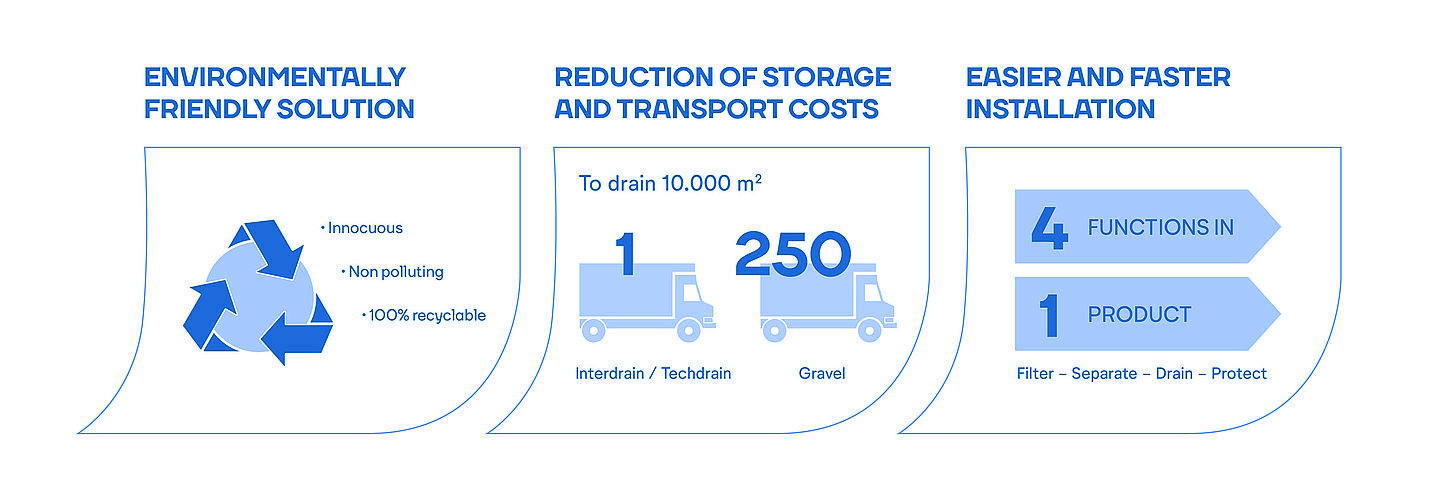VIADRAIN Roads & railways
Mechanically Stabilized Walls
Geocomposite drains are used as a backing layer to avoid groundwater access the reinforced soil mass and displace it towards the toe of the slope. Formed by a biplanar HDPE geonet thermally bonded over both sides to nonwoven PP geotextiles.
7690Contributions
-Improves the drainage capacity or completely replaces the natural drainage layer -Homogeneous drainage solution that follows strict quality control procedures -Simple and aesthetic design that harmonically complements other geosynthetic systems -Lightweight and flexible composition -Highly robust and resilient, able to withstand the loads applied during installation -Chemically inert and imperishable -Fast, easy and reliable installation, does not require heavy machinery or qualified staff -Outstanding transportation capacity -Easy to store and protected against external agents -Low carbon footprint
Features
-High transmissivity -Low core compressibility -Stable transmissivity over the long term in accordance with GRI GC13 Specification -Suitable for installation over steep slopes -Customizable geotextiles -Under ISO and ASTM Standards -In accordance with GRI GN4 Specification -Customizable width and length




Why is INTERMAS drainage a better solution than gravel?

In conventional designs, large volumes of aggregates are required to shape drainage layers, involving hundreds of transportation units per hectare. Moreover, shortage of permeable natural materials increases drastically the cost. To avoid this dependence, one single truck of drainage geocomposite is designed to cover the equivalent area of 600 dump trucks for a 80-cm thick layer.
VIADRAIN VIADRAIN - Roads & railways
Mechanically Stabilized Walls
Geocomposite drains are used as a backing layer to avoid groundwater access the reinforced soil mass and displace it towards the toe of the slope. Formed by a biplanar HDPE geonet thermally bonded over both sides to nonwoven PP geotextiles.
7690Contributions
-Improves the drainage capacity or completely replaces the natural drainage layer -Homogeneous drainage solution that follows strict quality control procedures -Simple and aesthetic design that harmonically complements other geosynthetic systems -Lightweight and flexible composition -Highly robust and resilient, able to withstand the loads applied during installation -Chemically inert and imperishable -Fast, easy and reliable installation, does not require heavy machinery or qualified staff -Outstanding transportation capacity -Easy to store and protected against external agents -Low carbon footprint
Features
-High transmissivity -Low core compressibility -Stable transmissivity over the long term in accordance with GRI GC13 Specification -Suitable for installation over steep slopes -Customizable geotextiles -Under ISO and ASTM Standards -In accordance with GRI GN4 Specification -Customizable width and length




Do you have a project in geosynthetic?
We encourage you to discuss your specific needs with our technical sales team which will be pleased to help you find the optimal solution to your needs.
Our catalog for Geosynthetic

